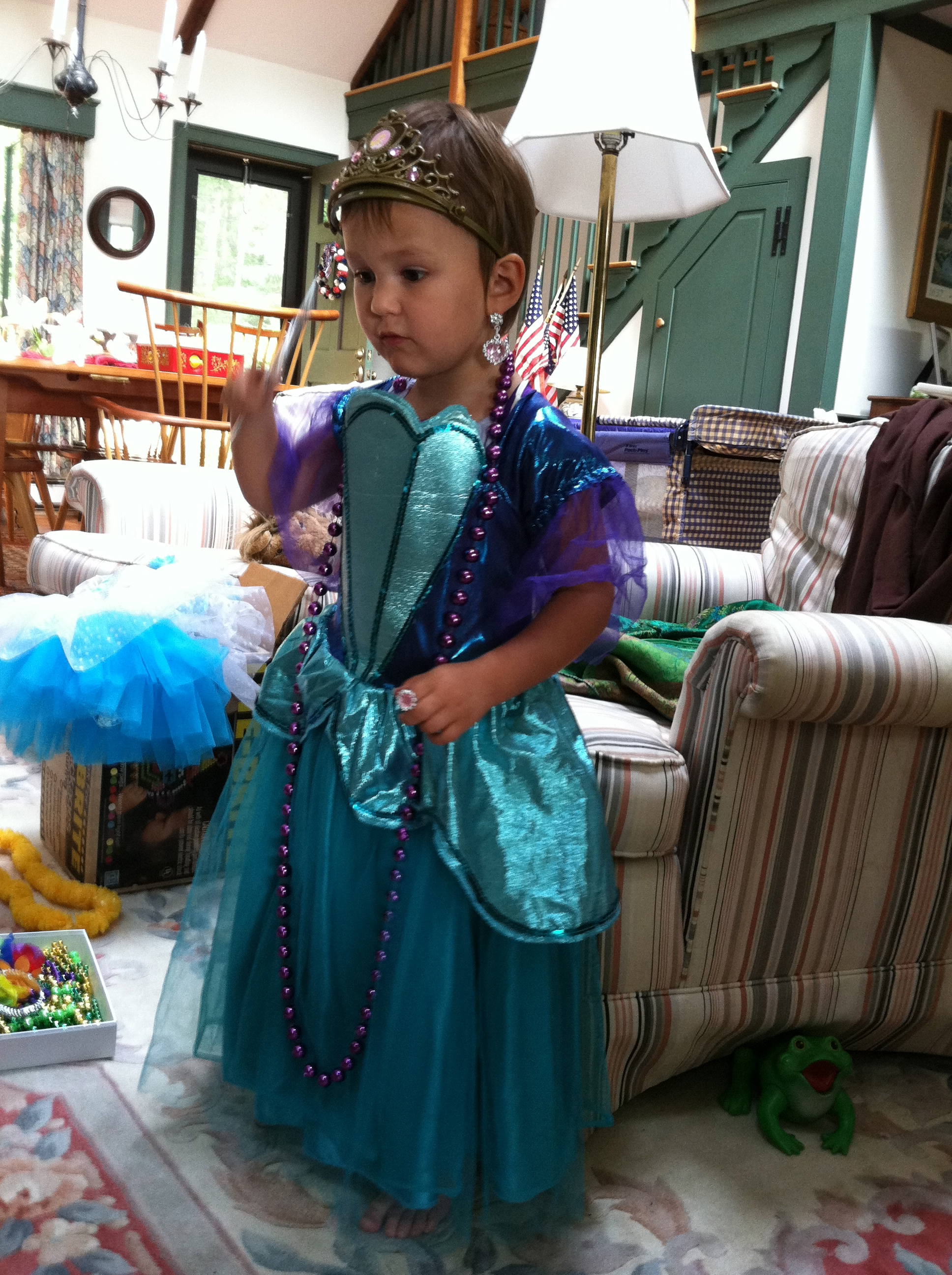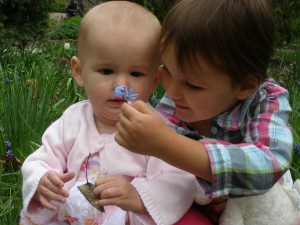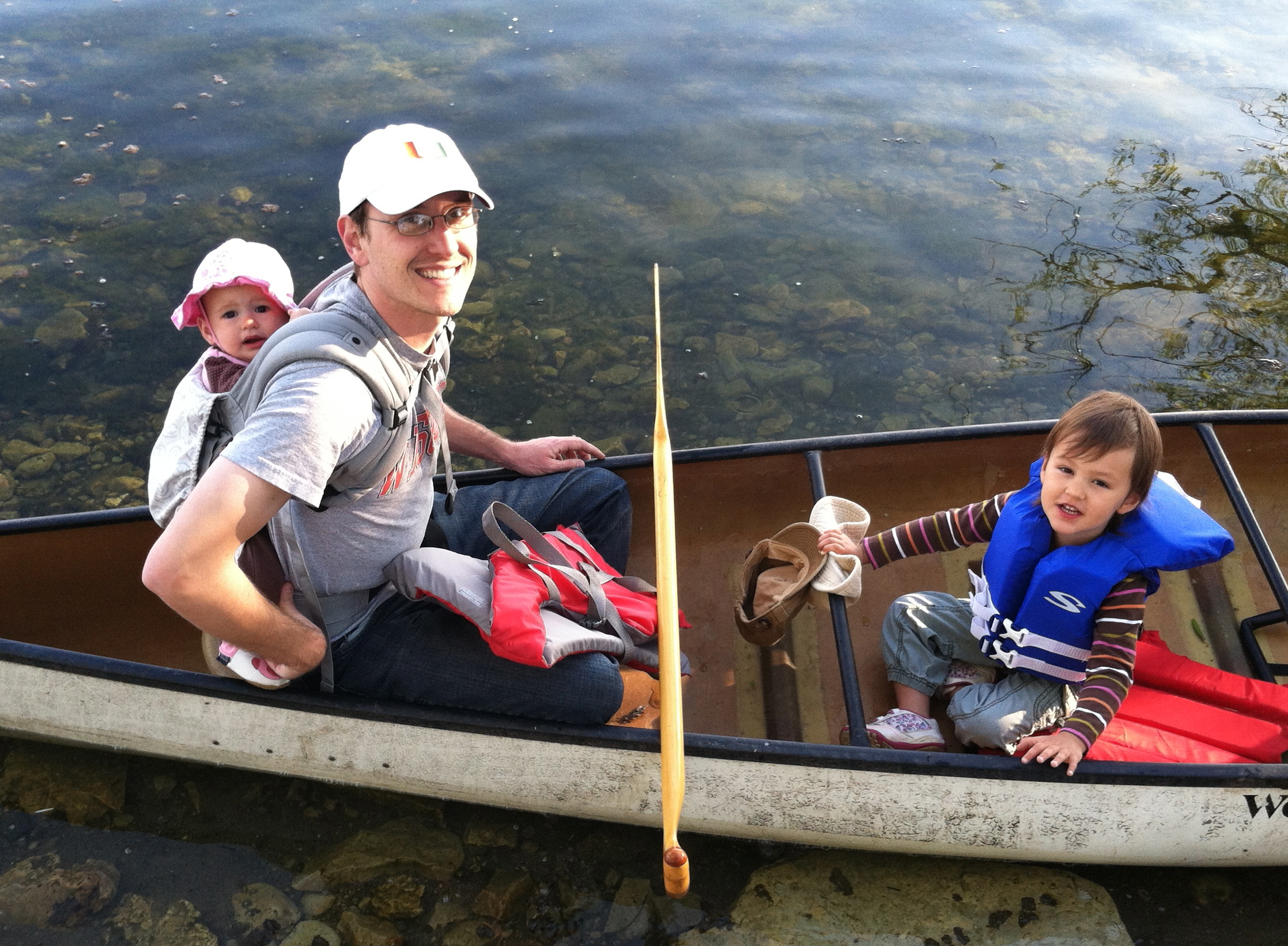 A while back, I was giving my three-year-old daughter, Brynn, a bath when she laid back in the tub and announced, “Look, Daddy, I’m a princess!”
A while back, I was giving my three-year-old daughter, Brynn, a bath when she laid back in the tub and announced, “Look, Daddy, I’m a princess!”
When I asked what that meant, she replied that it was her job to just lounge around until some prince (any prince would do) came along to save her. I suggested she could save herself. Brynn just laughed. She was three and, already, Daddy didn’t get it.
“Crap,” I thought, “She’s three and, already, I’ve failed as a father.”
A future of body image issues and unhealthily dependent relationships and an insanely expensive wedding unspooled in my mind.
Like many of our parental peers here in Madison, we actively policed all gender-specific apparel, entertainment and play for the first year or so of our first-born’s life. Then we’d watched, astonished, as our children became little toddling clichés anyway. Every two-year old boy we knew turned sticks into guns and spent their days literally laughing in the face of death – falling off of ledges, crashing down hills. Each little girl developed an unsettling attraction to the color pink and games that involved rote domestic drudgery – grocery shopping, cooking, shoving dolls around in strollers.
I brought the topic up with my (then) boss, a social scientist and father to a smart, successful, college-bound tomboy. Surely, I told him, some biological hardwiring was in play. He dismissed the notion outright. In his view, it was two years of insidious social conditioning and, if I had been vigilant like him, I could have raised a daughter who scoffed at gender roles and wore androgynous clothing throughout high school.
I suppose I shouldn’t have found it surprising that the social scientist came down so firmly on the side of socialization, but his certainty was unnerving. It seemed improbable that a few minor exposures to social gender norms would be enough to set my daughter irrevocably on the princess track.
This conversation has stayed with me so, in the service of science (and alleviating parental guilt), I called up my friend, Casey Lew-Williams. Casey, in addition to being a developmental psychologist, is a dad like me. He’s currently a post doc at the UW-Madison’s Infant Learning Lab and about to start a gig as an assistant professor at Northwestern. (Full disclosure: Brynn says Casey’s son, Carson, is a “really best friend” because he never pushes her down).
“So,” I asked, “were the gender roles unfolding in our backyard play dates a product of subtle social cues or were our kids just ‘born this way?’”

As with almost everything, the truth lies somewhere in between.
“Nature and nurture are always colliding, or at least continually informing one another,” Casey says. “Biology and the environment are giving each other high fives constantly.”
In 1959, Noam Chomsky (who was born on December 7th like my daughter) published an influential critique on behavioral explanations for language development. Ever since, developmental psychology has leaned toward biological explanations of behavior instead. Chomsky essentially argued, Casey says, that “language is too complex for kids to get so good at so quickly. It must be innate. There must be genes that code for language.”
This is true. Our brains are most certainly not blank slates at birth. However, just a little dose of experience can create a few new neural pathways and, consequently, new behavior. Our brains are indeed shaped by their biology, but they’re not wedded to it.
Casey says that, recently, his field has “tilted” away from biology and toward the conclusion that it’s not nature versus nurture, but nature AND nurture.
“The two are interacting in some combination for every aspect of growth and development,” Casey says. “If anyone’s taking an extreme view these days (by trying to pin human behavior on only one versus the other), they’re misguided.”
I don’t know which is worse, the fact that our behavior influences and literally shapes the physical structure of our kids’ brains, or the fact that societal stimuli we have no say over can do the exact same thing.
When Brynn, at ten months, obsessively turned to the picture of the doll in her Spanish/English book of toys and gave it big open-mouthed kisses, was I to blame? Could you pin her intense love of shoe shopping on a mother who doesn’t really like shoe shopping? And what could possibly explain Brynn’s second Christmas, when my aunt and uncle gave her an insanely pink, irresponsibly girly plastic baby that mocked all of our non-toxic wooden toys and canvas dolls by instantly becoming her favorite toy ever? Was it that one time at that one store where Brynn caught a five-minute glimpse of Sleeping Beauty? Did I not toss her in the air enough as an infant?
Maggie, my younger daughter, is now in a very close relationship with a Raggedy Ann doll. Should I switch her to Andy? Would it matter? Are all of these societal influences I can’t see undermining any lesson dear old dad tries to impart? It’s enough to drive me to drink. (Full disclosure: it usually does).
 I guess I shouldn’t be overwhelmingly concerned. I was a typical “boy.” All sticks became guns. I doodled warscapes into my school notebook – little bi-planes shooting at tanks that were blowing away stick figure soldiers. I once (okay, maybe twice) made a flamethrower out of a can of WD40 and a lighter and scorched some anthills. What the hell was that about? Can I blame Saturday morning cartoons? My parent’s divorce? Lead paint?
I guess I shouldn’t be overwhelmingly concerned. I was a typical “boy.” All sticks became guns. I doodled warscapes into my school notebook – little bi-planes shooting at tanks that were blowing away stick figure soldiers. I once (okay, maybe twice) made a flamethrower out of a can of WD40 and a lighter and scorched some anthills. What the hell was that about? Can I blame Saturday morning cartoons? My parent’s divorce? Lead paint?
Does it matter? I’m relatively happy with the way I turned out.
My subconscious and unintended actions will probably weigh more heavily on the final outcome of my kids than any conscious effort I make as a parent. I guess I’ll just embrace that. I’ll carve my own little contributions into the shape of their lives. Hopefully they’ll end up loving camping or writing or, at the very least, develop an intense loyalty to the appropriate college football team.
My wife will add her own bold impressions. The friends they love and movies they watch and books they read and experiences they have will all chip away, revealing a more complete picture. And, somewhere inside of them (their brain, I assume) will be a piece of what makes Brynn Brynn and what makes Maggie Maggie. A tiny little sliver that says “Daddy Was Here.”
—
Adam lives in Madison, Wisconsin where, between three jobs and two kids, he tries to find time to freelance. His last successful attempt was a feature on Asian carp in BioScience magazine. Before fatherhood derailed his ambitions, his work appeared in Scientific American, Audubon and Wired.com. Follow him on Twitter: @adamhint
Photos courtesy of Adam and Carrie Hinterthuer
Ha! I wanted to dress my daughter in pretty dresses and barrettes in her hair, but she refused. Instead of pushing dolls, she treated her stuffed animals in her veterinary clinic. She and her friends pulled the heads off their Barbies and made fun of Ken.
She grew into a beautiful independent daughter, dates men, and occasionally wears a dress.
Believe me, your daughter will grow up to be who she is, no matter how you try to influence her. And it won’t be what you expect.
Oh, Adam. I love this and your little family. Happy Father’s Day, buddy.
My own mother is a foofy girl. To her dismay I hate make-up, animal prints, pink and bling. I hang out in jeans (on a formal day), yoga wear (on casual days) with gloriously naked skin and my hair in a pony tail. However, my six year old daughter is a foofy girl, wearing animal prints, pink and bling. But both my mother and I are educated women, have rewarding careers and love our families!
It has ever been thus! A wonderful telling of a Dad’ love for his daughters, who ever they turn out to be.
Good stuff. I’ve always thought that we each bring something special, valuable and unique into the world. The challenge is to know it, hang on to it and find ways to live it. Hopefully, our parents, teachers, etc., can provide a safe, rooted and honest framework so kids can express their uniqueness gifts. As parents, we probably have less to do with who are kids are than we do with how can we help them be who they are. I like to think though that some part of us shines through our kids laughter. Happy Father’s Day!
Good piece. I think gender stereotypes are stereotypical for good, mostly indelible reasons, and yet those traits aren’t determinant features of an individual personality. A dad can play with his little girl and her dolls (showing cross-geneder interest and approval) just as he can play with his son and his trucks.
But, please, it’s: “I was giving my three-year-old daughter, Brynn, a bath when she LAY back in the tub . . . “
Thanks for the comment (and the edit), Don. I like thinking that my blunders (especially grammatical) won’t be leading to much of of anything in the way of my daughters’ personalities!
Two very beautiful girls who are very fortunate girls to have you for their father.
Adam, your mother always talks about Brynn’s sense of humor. I suspect that will take her a lot farther in this world than her style sense!
This makes me smile, Adam. Much to my mother’s disappointment, I wanted nothing to do with dolls, anything pink, or frilly dresses. I figure I am destined to have a girly girl someday as karmic payback. But for now I have a very boyish boy who, despite our efforts to be gender-neutral, loves all things trucks, trains, power tools, and anything that makes lots of noise. I have spent many long nights wondering about nature and nurture.
I’m beginning to suspect an explanation that has nothing to do with nature or nurture, heredity or environment, but with psychology: the same explanation for why I am so tidy and my mother was so messy.
After raising three teenage girls, the number of 180 degree changes, phases and fads was enough to leave a person dizzy. When your daughters are 30+, ask them again what they remember as important. You’ll be amazed how few major impacts there really were and how small the momemnt was that made them. Let them know your heart is always open and you’ll find way more than a sliver.